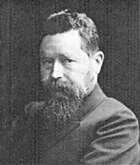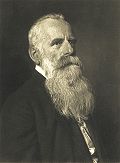
Back الانتخابات الفيدرالية الألمانية 1919 Arabic Парламенцкія выбары ў Германіі (1919) Byelorussian Německé volby do národního shromáždění 1919 Czech Valget i Tyskland 1919 Danish Wahl zur Deutschen Nationalversammlung German Elecciones federales de Alemania de 1919 Spanish انتخابات فدرال آلمان ۱۹۱۹ Persian Élections constituantes allemandes de 1919 French Pemilihan federal Jerman 1919 ID Elezioni dell'Assemblea nazionale tedesca del 1919 Italian
| |||||||||||||||||||||||||||||||||||||||||||||||||||||||||||||
All 423 seats in the Weimar National Assembly 212 seats needed for a majority | |||||||||||||||||||||||||||||||||||||||||||||||||||||||||||||
|---|---|---|---|---|---|---|---|---|---|---|---|---|---|---|---|---|---|---|---|---|---|---|---|---|---|---|---|---|---|---|---|---|---|---|---|---|---|---|---|---|---|---|---|---|---|---|---|---|---|---|---|---|---|---|---|---|---|---|---|---|---|
| Registered | 36,779,888 ( | ||||||||||||||||||||||||||||||||||||||||||||||||||||||||||||
| Turnout | 83.0% ( | ||||||||||||||||||||||||||||||||||||||||||||||||||||||||||||
| |||||||||||||||||||||||||||||||||||||||||||||||||||||||||||||
| |||||||||||||||||||||||||||||||||||||||||||||||||||||||||||||
| This article is part of a series on the |
| Politics of Germany |
|---|
 |
Federal elections were held in Germany on 19 January 1919,[1] although members of the standing army in the east did not vote until 2 February. The elections were the first of the new Weimar Republic, which had been established after World War I and the Revolution of 1918–19, and the first with women's suffrage. The previous constituencies, which heavily overrepresented rural areas, were scrapped, and the elections held using a form of proportional representation.[2] The voting age was also lowered from 25 to 20.[3] Austrian citizens living in Germany were allowed to vote, with German citizens living in Austria being allowed to vote in the February 1919 Constitutional Assembly elections.[4]
From its inaugural session on 6 February, the National Assembly (Nationalversammlung) functioned as both a constituent assembly and unicameral legislature. The supporting parties of the "Weimar Coalition" (SPD, Zentrum and DDP) together won 76.2% of the votes cast; on 13 February, provisional president Friedrich Ebert appointed Philipp Scheidemann, of the SPD, as Minister-President. The office was later renamed Chancellor when the Weimar Constitution came into force in August 1919. The Scheidemann cabinet replaced the revolutionary Rat der Volksbeauftragten (Council of the People's Deputies). Voter turnout was 83.0%.[5]
- ^ Dieter Nohlen & Philip Stöver (2010) Elections in Europe: A data handbook, p762 ISBN 978-3-8329-5609-7
- ^ Nohlen & Stöver, p747
- ^ Nohlen & Stöver, pp746–748
- ^ Austria votes today. – German Part of Former Dual Monarchy Chooses Its Constituent Assembly. Archived 7 March 2020 at the Wayback Machine, The New York Times, 16 February 1919 (PDF)
- ^ Nohlen & Stöver, p776







